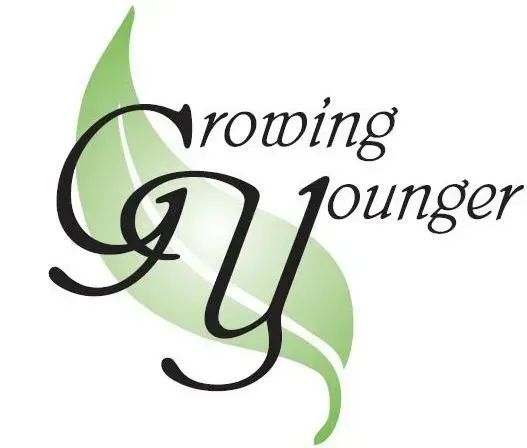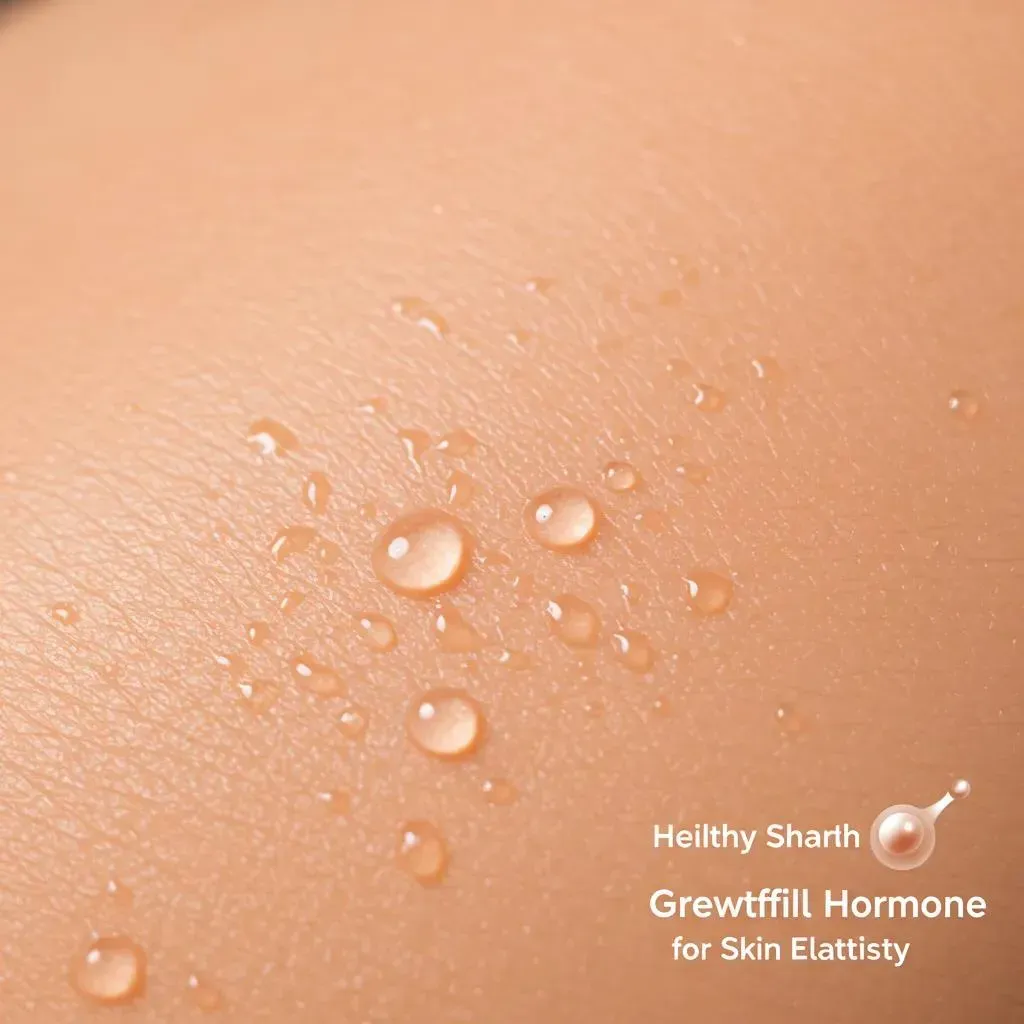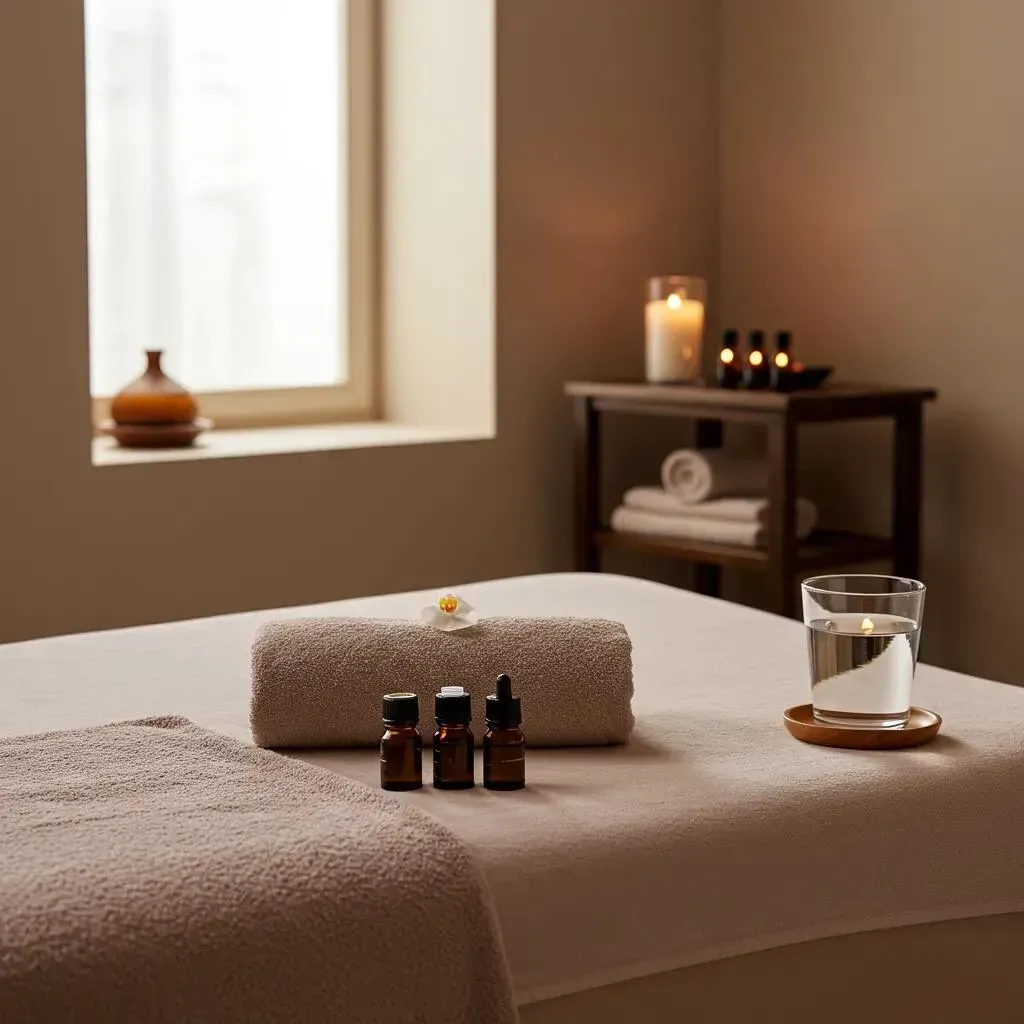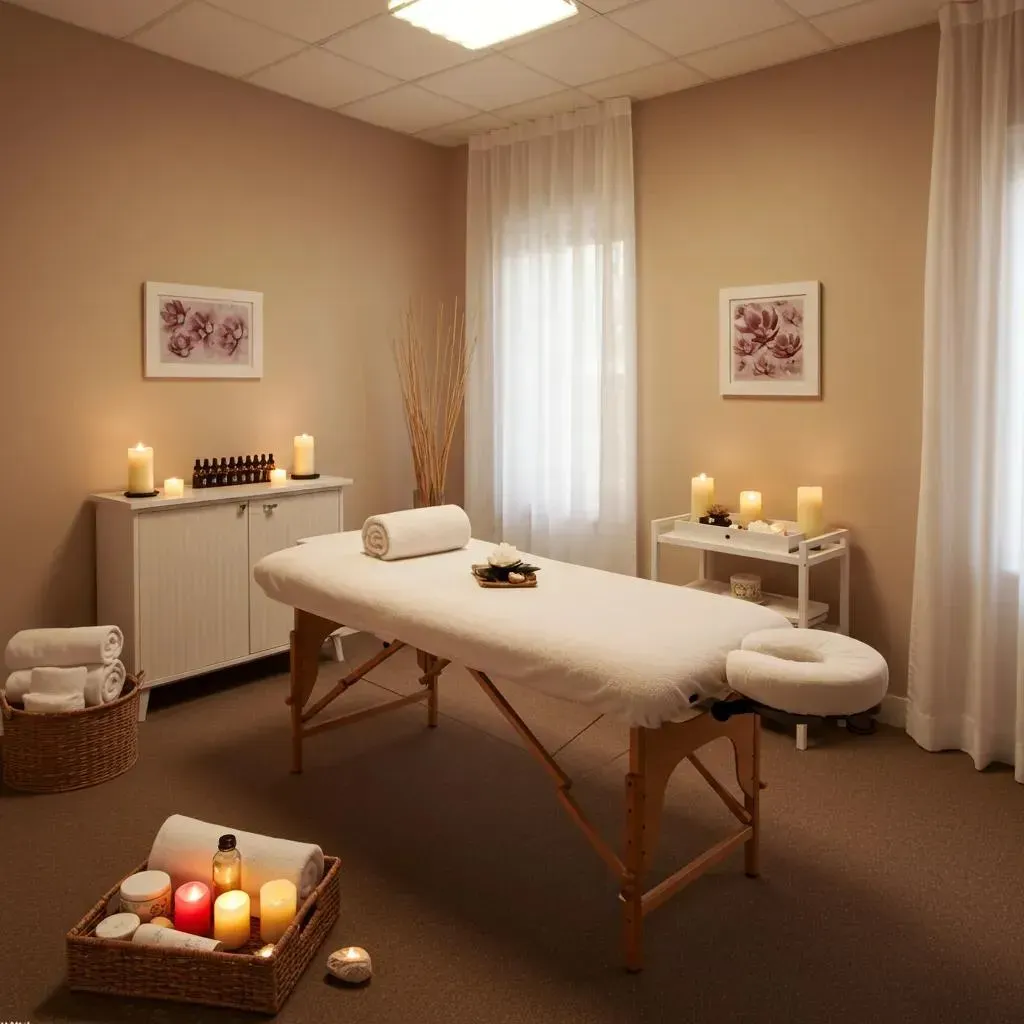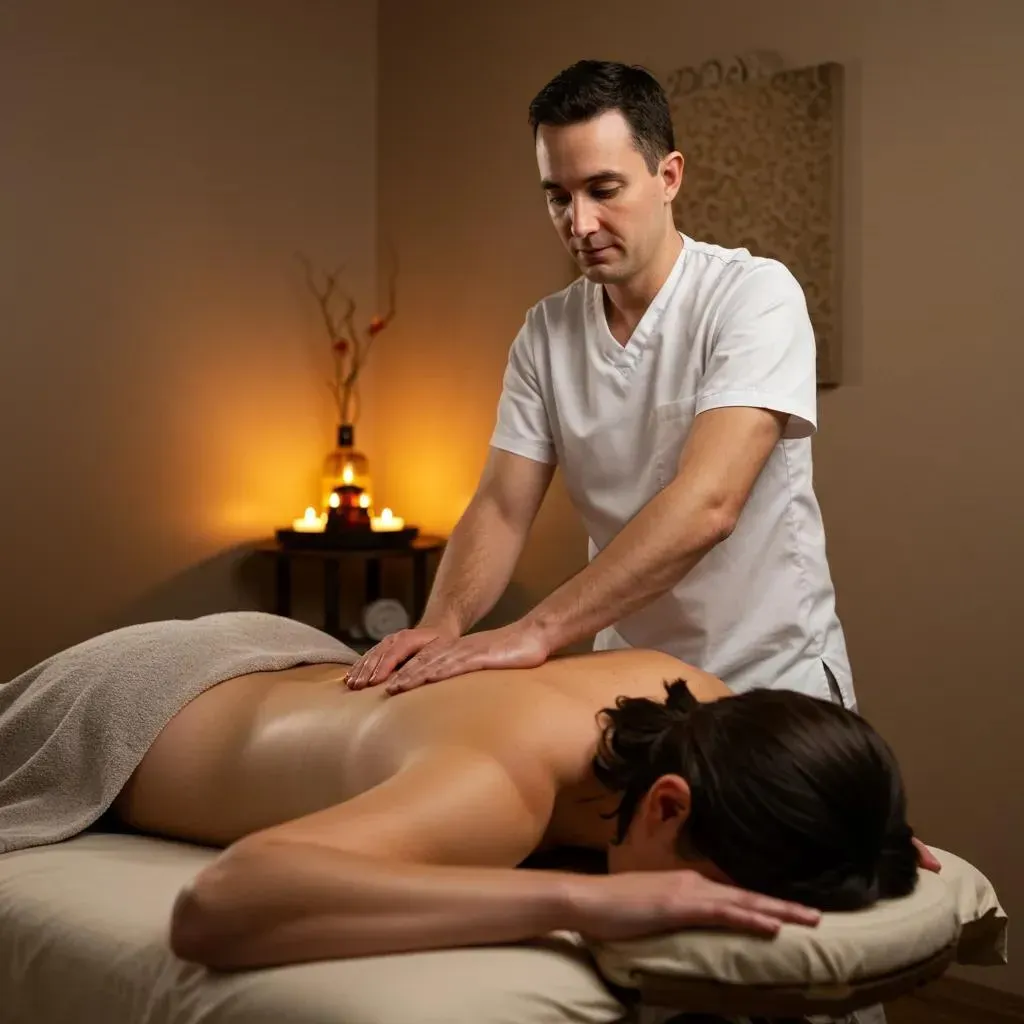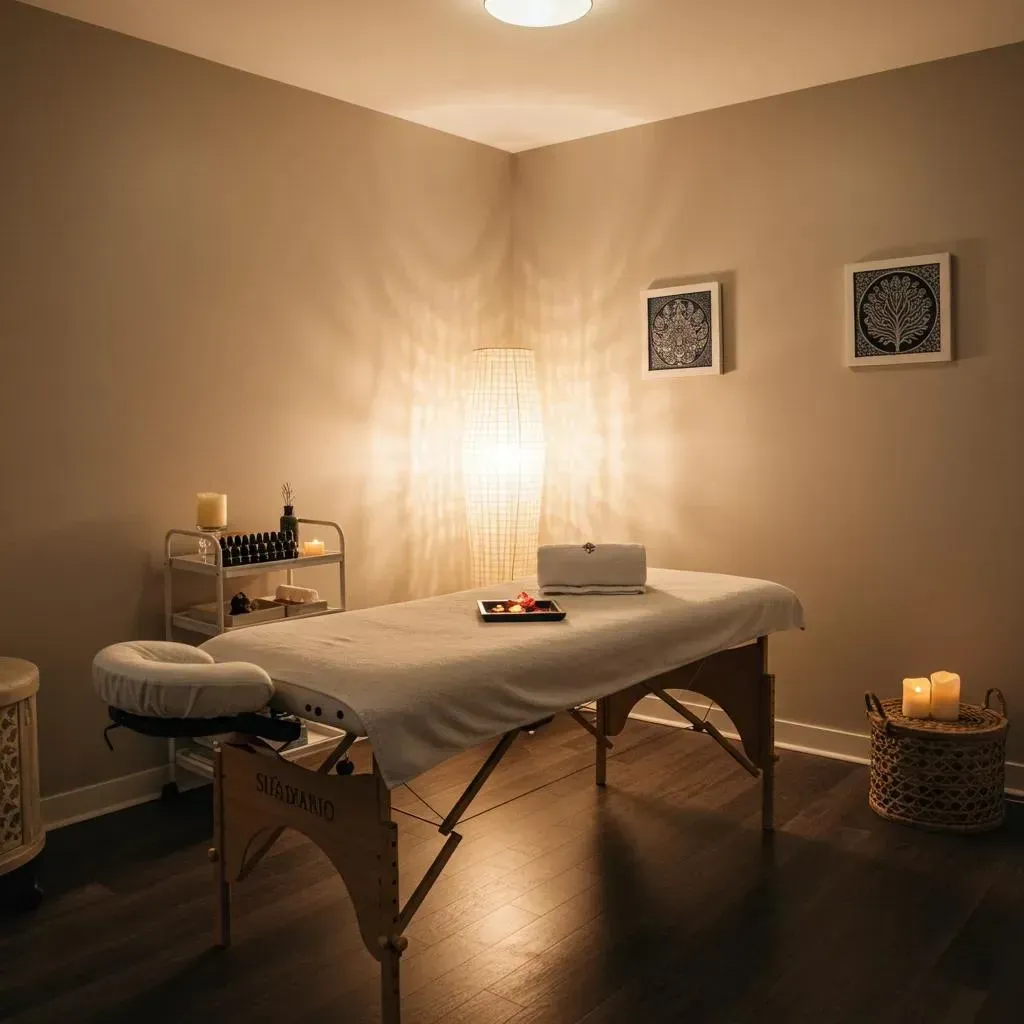Transform Your Skin: Effects of Hormone Therapy Revealed
Hormone Therapy and Its Impact on Skin Health: Benefits, Effects, and Rejuvenation Insights

Hormone therapy (HRT) affects skin health by restoring hormones that regulate collagen, hydration, and cell renewal, producing measurable improvements in texture, elasticity, and wound healing. This article explains which hormones matter for skin — estrogen, testosterone, and human growth hormone (HGH) — and how their replacement or optimization supports anti-aging skin goals through physiologic mechanisms such as collagen stimulation, increased dermal thickness, and improved hyaluronic acid-mediated hydration. Many people notice accelerated thinning, dryness, or adult-onset acne as hormone patterns shift with age or medical conditions; understanding HRT’s role helps set realistic expectations for timelines, monitoring, and combination treatments. We cover the biological mechanisms, evidence-based timelines for visible change, common skin complaints tied to hormone imbalance, practical combination strategies with lasers and injectables, and safety considerations that clinicians use to mitigate skin-related side effects. Readers will gain clear guidance on which hormones drive specific skin outcomes, how bioidentical options and pellet therapy compare, and what to expect when pairing systemic HRT with aesthetic procedures.
How Does Hormone Therapy Improve Skin Health and Rejuvenation?
Hormone therapy improves skin health by replacing or normalizing hormones that directly regulate fibroblast activity, sebum production, and extracellular matrix maintenance, which in turn enhances collagen and elastin networks and restores moisture balance. These mechanisms lead to practical benefits: thicker dermis, fewer fine lines, better wound healing, and improved tone and texture. Contemporary research shows hormone-driven modulation of IGF-1, estrogen receptor signaling, and androgen pathways all converge on skin structure, so individualized HRT plans focus on restoring physiologic balance rather than supraphysiologic dosing. The next subsections break down key benefits, the primary hormones involved, how HRT supports anti-aging goals, and candidate selection criteria for safely improving skin outcomes.
Hormone classes summarized below give a quick view of mechanism, primary benefits, and typical timelines to help frame clinical expectations before diving into specifics.
Different hormone classes affect skin through distinct cellular pathways and yield characteristic improvements.
| Hormone Class | Mechanism on Skin | Primary Benefits | Typical Timeline |
|---|---|---|---|
| Estrogen | Estrogen receptor activation → fibroblast stimulation and increased hyaluronic acid | Improved collagen density, hydration, reduced thinning | 4–12 weeks for hydration; 3–6 months for collagen changes |
| Testosterone | Androgen receptor modulation → increased dermal thickness and sebaceous activity regulation | Greater firmness, improved texture; may alter oiliness | 6–12 weeks for thickness and texture changes |
| Human Growth Hormone (HGH) | GH → IGF-1 cascade → fibroblast proliferation and matrix remodeling | Enhanced cell regeneration, wound healing, texture improvement | 4–12 weeks early signs; 3–6 months for remodeling |
This comparison clarifies that different hormones act via separate pathways but often produce complementary skin benefits, and that realistic timelines depend on therapy type and baseline skin status.
What Are the Key Skin Benefits of Hormone Replacement Therapy?

Hormone replacement therapy offers several direct skin benefits by reversing hormone-deficiency consequences and restoring dermal homeostasis. First, HRT can increase collagen and elastin synthesis through receptor-mediated fibroblast activation, which manifests as improved firmness and reduced fine lines over months. Second, hormones like estrogen promote glycosaminoglycan production and hyaluronic acid maintenance, improving moisture retention and skin plumpness within weeks. Third, HGH and IGF-1 signaling accelerate wound healing and cellular turnover, which can refine texture and speed recovery after procedures. These mechanisms collectively support improved tone, fewer creases, and enhanced procedural outcomes, and they set the stage for tailoring combined approaches such as topical actives or in-office treatments that build on systemic improvements.
Hormone-driven improvements often appear in a staged pattern, which is important for planning combination treatments and setting patient expectations.
- Early hydration and glow: 4–12 weeks
- Noticeable texture and reduced fine lines: 8–12 weeks
- Structural collagen remodeling: 3–6 months
These timeframes help clinicians sequence adjunctive aesthetic procedures to maximize outcomes.
Which Hormones Play a Vital Role in Skin Health?
Several hormones exert primary control over skin structure and function through direct receptor signaling and downstream growth-factor pathways. Estrogen supports dermal fibroblasts and hyaluronic acid synthesis, preserving thickness and hydration. Testosterone influences dermal thickness and matrix composition and modulates sebaceous glands, affecting firmness and oil balance. Human Growth Hormone (HGH), acting largely via IGF-1, stimulates fibroblast proliferation and extracellular matrix remodeling, promoting regeneration and wound repair. Secondary contributors such as progesterone and DHEA may modulate inflammation, barrier function, and sebum dynamics, but their roles are typically adjunctive to the three primary hormones. Understanding these roles informs targeted HRT choices that prioritize skin outcomes while balancing systemic health considerations.
Recognizing which hormone underlies a particular skin complaint guides both diagnostics and combination treatment planning, which we explore next.
How Does Hormone Therapy Support Anti-Aging Skin Goals?
Hormone therapy supports anti-aging by restoring the biological environment necessary for matrix production, hydration, and cellular turnover—core elements of youthful skin. By improving baseline collagen and elastin content, HRT creates a more resilient substrate that responds better to injectables and laser resurfacing, often extending the durability of aesthetic treatments. Systemic hormone optimization also reduces chronic dryness and fragility, lowering procedural risk and improving healing times. Clinicians typically coordinate HRT initiation with conservative topical regimens and staged procedural plans to avoid overlapping inflammatory windows and to capitalize on early hydration gains. The result is a synergistic pathway where systemic and topical/in-office strategies reinforce one another for more consistent, durable rejuvenation.
This synergy suggests that clinicians should view HRT as a foundation rather than a standalone fix, especially when planning invasive resurfacing or volumizing strategies.
Who Is an Ideal Candidate for Hormone Therapy to Enhance Skin?
Ideal candidates for HRT to enhance skin quality are individuals showing clinical signs of hormone-related ageing—progressive dermal thinning, persistent dryness resistant to topical care, or delayed wound healing—combined with laboratory-confirmed hormone deficiencies or imbalances. Candidates often include postmenopausal women with estrogen-related thinning, men with symptomatic testosterone deficiency affecting skin thickness, and selected patients with low IGF-1/HGH-related regeneration concerns; however, suitability always requires individualized assessment, baseline labs, and evaluation for contraindications. Contraindications may include active hormone-sensitive malignancies or untreated cardiovascular risk factors, and decisions should be made with clinicians experienced in endocrine and dermatologic interplay. A formal medical evaluation ensures the right hormone, route, and dose are chosen to target skin benefits safely.
A careful clinical workup and ongoing monitoring optimize outcomes and minimize skin-related adverse effects, which we detail later.
What Is Estrogen’s Role in Skin Rejuvenation and Anti-Aging?
Estrogen plays a central role in skin rejuvenation by stimulating estrogen receptors in dermal fibroblasts, which increases collagen synthesis and regulates matrix metalloproteinases that degrade extracellular matrix components. This receptor-mediated signaling maintains dermal thickness, improves elasticity, and supports glycosaminoglycan production that retains water, so estrogen deficiency during menopause translates into measurable skin thinning and increased wrinkling. Topical and systemic estrogen therapies differ in tissue targeting and risk profiles, and combining estrogen therapy with supportive skincare (sun protection, retinoids, peptides) amplifies benefits. The following subsections examine mechanisms, menopause-related changes, reversal strategies, and combination regimens to maximize estrogen-driven skin restoration.
An EAV-style table below clarifies specific estrogen-linked attributes and their clinical effects.
| Entity | Attribute | Clinical Effect |
|---|---|---|
| Estrogen | Collagen synthesis | Increased dermal collagen, improved tensile strength |
| Estrogen | Skin thickness | Preservation or partial restoration of dermal thickness |
| Estrogen | Hydration | Enhanced hyaluronic acid and moisture retention |
This table highlights how estrogen influences key meronyms of the skin—collagen, elastin, and hyaluronic acid—producing clinically observable rejuvenation.
How Does Estrogen Stimulate Collagen Production and Skin Elasticity?
Estrogen stimulates collagen production via upregulation of fibroblast activity and modulation of transforming growth factor-beta (TGF-β) pathways, which increases procollagen synthesis and reduces collagen-degrading enzyme activity. Estrogen receptors (ERα and ERβ) in dermal cells mediate these responses, enhancing matrix deposition and maintaining elasticity by preserving elastin integrity. In practical terms, restoring estrogen levels can increase skin thickness and reduce fine lines as the dermal collagen network is rebuilt over months. Understanding this receptor-driven mechanism clarifies why estrogen therapy shows measurable structural benefits and why combining it with mechanical or topical stimulators amplifies outcomes.
These receptor-level changes set the stage for clinically relevant improvements in texture and resilience when monitored over months.
What Skin Changes Occur During Menopause Due to Estrogen Deficiency?
During menopause, estrogen deficiency commonly causes progressive collagen loss, reduced dermal thickness, decreased sebum and glycosaminoglycan production, and impaired barrier function—manifesting as dryness, increased fragility, and more pronounced wrinkles. Clinically, studies report substantial reductions in collagen content within the first five years of menopause, which accelerates visible aging signs. Perimenopausal fluctuations also create episodic changes in oiliness and sensitivity, complicating topical management. Recognizing the timing and pattern of these changes informs when to consider estrogen therapy and adjunctive topical strategies to mitigate rapid postmenopausal deterioration.
This menopausal timeline frames realistic expectations for how quickly interventions may reverse or slow skin aging.
How Can Estrogen Therapy Reverse Menopausal Skin Aging?
Estrogen therapy can partially reverse menopausal skin aging by restoring the biochemical signals that promote collagen and hyaluronic acid synthesis, leading to improved hydration and increased dermal thickness over several months. Typically, patients notice softer, more hydrated skin within weeks, while measurable collagen increases and improved elasticity appear over 3–6 months when therapy is correctly dosed and monitored. Clinicians emphasize evidence-based dosing, regular follow-up, and integration with photoprotection and topical agents to sustain gains and minimize risk. While estrogen therapy is not a cure-all, it provides a physiologic foundation that enables other interventions to perform better.
These expected timelines guide sequencing of adjunctive treatments such as lasers or peels for optimal safety and efficacy.
HowDoes Combining Estrogen Therapy with Skincare Enhance Results?
Combining estrogen therapy with targeted skincare enhances results because systemic hormone-driven matrix rebuilding creates a receptive environment for topical actives that stimulate collagen or improve barrier function. Effective pairings include topical retinoids and peptide serums to encourage epidermal turnover and collagen synthesis, humectant-rich moisturizers to capitalize on improved glycosaminoglycan levels, and daily sunscreen to prevent photo-degradation of newly synthesized collagen. Sequencing typically starts with conservative topical introduction alongside initial systemic therapy to monitor tolerance and optimize absorption. This combined approach yields more consistent improvements in tone, hydration, and wrinkle reduction than either strategy alone.
Effective integration requires coordinated timing and patient education to protect and nurture early physiologic improvements.
How Does Testosterone Affect Skin Health and Appearance?
Testosterone influences skin by modulating dermal thickness, collagen content, and sebaceous gland activity, which can improve firmness and texture but also affect oiliness and acne propensity depending on individual sensitivity. In men, physiologic testosterone replacement often restores age-related thinning and improves tissue resilience, while in women tailored androgen therapy at appropriate doses can support skin thickness without provoking unwanted virilization when carefully supervised. Testosterone’s dermatologic effects are therefore dose- and receptor-dependent, and clinicians balance firmness and texture gains against potential increases in sebum production through individualized protocols and monitoring. The subsections below outline specific benefits, acne considerations, and male-focused anti-aging strategies that integrate testosterone therapy.
A clear understanding of testosterone’s dual effects—structural strengthening versus sebaceous modulation—helps manage expectations and side effects.
What Are Testosterone’s Benefits for Skin Firmness and Texture?
Testosterone promotes skin firmness and better texture primarily by increasing dermal thickness through androgen receptor–mediated stimulation of matrix production and fibroblast activity. These structural benefits can translate into measurable increases in tensile strength and a reduction in laxity when testosterone levels are optimized in deficient individuals. In both men and selected women, improved thickness contributes to a smoother appearance and better response to volume-restoring procedures. However, careful dosing and monitoring are required to maximize dermal benefits while minimizing androgenic side effects, which is why personalized treatment plans are essential.
This balance between structural improvement and safety underscores the need for clinician-guided therapy.
Can Testosterone Therapy Help Manage Adult Acne and Oil Production?
Testosterone’s effect on sebum and acne is complex: while androgens can increase sebaceous activity and risk of acne in susceptible individuals, restoring physiologic balance sometimes reduces inflammatory acne caused by hormonal swings or rebound androgen excess. Management strategies include tailoring dose, choosing delivery method with steadier serum levels, and combining HRT with topical agents or dermatology co-management when acne risk is present. Monitoring sebum trends and skin inflammation during the early weeks of therapy allows clinicians to adjust regimens and add topical retinoids or anti-inflammatory measures as needed. Thus testosterone therapy can be both a cause and a remedy depending on context and individual response.
Close follow-up and interdisciplinary care help mitigate acne risks while preserving texture and firmness gains.
How Does Testosterone Therapy Support Male Anti-Aging Skin Care?
In men, testosterone therapy supports anti-aging by reversing age-related dermal thinning, improving tone, and enhancing recovery after procedures due to better tissue quality. When integrated with targeted aesthetic interventions—such as energy-based devices for collagen remodeling or strategic dermal fillers—optimized testosterone levels create a more resilient skin matrix that often yields longer-lasting results. Protocols for men emphasize baseline endocrine assessment, cardiovascular risk evaluation, and gradual titration to physiologic ranges to balance systemic benefits with skin-specific goals. Long-term maintenance focuses on combined lifestyle, topical, and procedural strategies that preserve gains and support overall wellness.
This male-focused approach illustrates how systemic HRT and aesthetic medicine can be coordinated for durable outcomes.
What Are the Skin Benefits of Human Growth Hormone Therapy?
Human Growth Hormone (HGH) affects skin health primarily by activating the IGF-1 pathway, which stimulates fibroblast proliferation, extracellular matrix synthesis, and angiogenesis—mechanisms that promote tissue regeneration and improved wound healing. Clinically, HGH-related interventions have shown improvements in skin thickness, elasticity, and texture in selected settings, but results vary by individual baseline status, dosing strategy, and monitoring. Important limitations include variability in evidence strength and the need for careful endocrinologic supervision to mitigate systemic risks. Below we detail the regenerative mechanisms, evidence for wrinkle and texture improvement, and realistic timelines to expect measurable skin changes with HGH-focused programs.
Because HGH works through systemic growth-factor pathways, its skin effects often complement estrogen- and testosterone-driven benefits and can accelerate post-procedural recovery.
| Therapy Type | Mechanism | Expected Skin Outcome |
|---|---|---|
| HGH / IGF-1 modulation | Stimulates fibroblasts and matrix remodeling | Improved texture, increased dermal thickness over months |
| Local growth-factor adjuncts | Enhances cellular proliferation at wound sites | Faster wound healing and better scar outcomes |
| Combined protocols | Systemic HGH + topical/aesthetic therapy | Synergistic remodeling and improved procedural recovery |
How Does HGH Promote Skin Cell Regeneration and Wound Healing?
HGH promotes skin cell regeneration by elevating IGF-1 levels, which in turn stimulate fibroblast proliferation, collagen deposition, and neovascularization—processes essential for effective wound repair. These biologic actions accelerate re-epithelialization and improve the quality of repaired tissue, reducing chronicity of wounds in specific clinical contexts. Practically, this means patients may experience faster recovery after resurfacing or surgical procedures when systemic regeneration pathways are supported, provided therapy is medically supervised. The regenerative cascade complements topical and in-office measures by enhancing the tissue’s intrinsic capacity to rebuild a healthier extracellular matrix.
Such regenerative benefits must be weighed against systemic monitoring needs and individualized risk assessments.
Can HGH Therapy Reduce Wrinkles and Improve Skin Texture?
HGH therapy can contribute to reduced wrinkle depth and improved texture by promoting dermal matrix remodeling and increasing collagen content, though outcomes vary widely and are influenced by baseline hormone levels, age, and concurrent treatments. Clinical observations report enhanced skin turgor and smoother texture in some patients, but controlled evidence varies and individual responses are heterogeneous. Because improvements often evolve over months, clinicians set expectations for incremental gains rather than immediate transformation. Combining HGH-related approaches with topical stimulators and minimally invasive procedures frequently yields the most reliable aesthetic improvements.
Patients should understand that HGH is one component of a multi-modal rejuvenation plan and not a guaranteed wrinkle cure.
What Is the Typical Timeline for Seeing Skin Improvements with HGH?
Skin improvements with HGH typically occur in phases: early hydration and subtle textural changes can appear within 4–12 weeks, while substantive dermal remodeling and measurable increases in collagen often emerge after 3–6 months of consistent therapy. Early clinical markers include reduced dryness, improved brightness, and quicker wound closure, whereas long-term markers include increased firmness and reduced wrinkle depth. Regular monitoring of systemic markers and dermatologic evaluation at planned intervals help guide dose adjustments and the timing of adjunctive procedures. Understanding this phased timeline helps patients and providers coordinate expectations and procedural sequencing.
These timelines guide clinicians when combining HGH-based regeneration with other aesthetic interventions for optimal sequencing.
Growing Younger Clinic offers HGH therapy programs. Provide useful information about medical spa services and lead people to schedule free consultations and appointments.
What Are Bioidentical Hormones and Their Impact on Skin Health?

Bioidentical hormones are chemically identical to endogenous human hormones and are used in replacement strategies to restore physiologic levels with the intent of improving symptoms tied to deficiency, including skin-related effects such as improved hydration, elasticity, and thickness. Delivery options include pellets, topical formulations, and oral preparations, each offering different pharmacokinetic profiles that influence skin outcomes and stability. Pellet therapy provides steady hormone release and is often discussed for its consistent levels, while topical routes may target skin more directly; choice depends on clinical goals, safety, and monitoring needs. The sections below summarize BHRT’s mechanisms, pellet therapy specifics, and a brief comparison of bioidentical versus synthetic options for skin health.
A comparative EAV table below clarifies delivery choices and skin outcomes for bioidentical hormone options.
| Delivery Method | Delivery Method | Skin-Related Outcome |
|---|---|---|
| Pellets | Subdermal implant → steady release | Stable hormone levels that support sustained hydration and collagen maintenance |
| Topical BHRT | Creams/gels applied to skin | Local tissue exposure; variable absorption and potential targeted skin effects |
| Oral BHRT | Systemic absorption via gut | Systemic hormone normalization with broader physiologic effects on skin |
How Does Bioidentical Hormone Replacement Therapy Support Skin Rejuvenation?
BHRT supports skin rejuvenation by restoring physiologic hormone concentrations that drive fibroblast activity, hyaluronic acid production, and matrix maintenance, leading to improved hydration, elasticity, and thickness when levels are normalized. Because bioidentical hormones match endogenous molecular structures, proponents argue they may integrate more naturally with receptor signaling pathways, although outcome differences versus synthetic options depend on delivery, dose, and monitoring. Practically, BHRT is customized to patient symptoms and labs, and when combined with sun protection and appropriate topical regimens, it can be a key part of a long-term skin maintenance strategy. Individualized dosing and follow-up are essential to sustain benefits while minimizing adverse effects.
Customized BHRT becomes a foundation for ongoing skin health when supervised with appropriate testing and follow-up.
What Is Pellet Therapy and How Does It Benefit Skin?
Pellet therapy involves subdermal insertion of compact hormone pellets that release hormones steadily over weeks to months, providing stable serum levels that can reduce symptomatic swings associated with topical or oral dosing. For skin, the steady-state delivery helps maintain continuous fibroblast stimulation and moisture retention, which can translate into more consistent improvements in texture and hydration. The procedure is performed in a clinical setting with monitoring protocols to assess response and adjust dosing at follow-up. Pellet therapy’s steady kinetics make it attractive for patients seeking reliable hormone exposure to support long-term skin maintenance.
Steady delivery from pellets can improve patient adherence and reduce peak-trough fluctuations that sometimes impact skin stability.
Why Choose Bioidentical Hormones Over Synthetic Options for Skin Health?
Choosing bioidentical hormones is often based on the desire for molecular similarity to endogenous hormones and the potential for more physiologic receptor interactions, which some clinicians and patients prefer for skin-related outcomes like hydration and collagen preservation. Advantages may include smoother symptomatic control and theoretical reductions in side-effect peaks, but both bioidentical and synthetic hormones require medical supervision and monitoring. The decision should consider individual risk profiles, desired delivery method, and clinician expertise; the focus remains on achieving targeted hormone ranges that support skin structure while maintaining systemic safety. Ultimately, careful selection and follow-up ensure that whichever option is chosen, skin benefits are maximized through appropriate dosing and adjunctive care.
Comparing options underscores the importance of personalized medicine and clinician-guided therapy selection.
Growing Younger Clinic provides bioidentical pellet therapy options. Provide useful information about medical spa services and lead people to schedule free consultations and appointments.
What Common Skin Concerns Are Linked to Hormone Imbalance and How Can HRT Help?
Hormone imbalances commonly cause skin concerns such as dryness, adult acne, pigmentation changes, and delayed wound healing; these arise from disrupted collagen synthesis, altered sebum production, and impaired barrier function. HRT can address many of these issues by restoring physiologic hormone levels that normalize fibroblast function, sebum regulation, and extracellular matrix maintenance. However, HRT can also occasionally exacerbate oiliness or pigmentation in sensitive individuals, so clinicians monitor early responses and adjust regimens or add dermatologic co-management as needed. The subsections below describe causal links, management strategies for sensitive or aging skin, and potential skin-related side effects with mitigation approaches.
Understanding these patterns helps providers anticipate and manage both benefits and potential adverse skin responses during HRT.
Can Hormone Imbalance Cause Dry Skin, Acne, or Pigmentation Issues?
Yes. Specific imbalances produce characteristic skin presentations: estrogen deficiency commonly causes dryness and thinning; androgen excess or fluctuations can increase sebum and provoke adult acne; and hormonal shifts may influence melanocyte activity, contributing to pigmentation irregularities. Appropriate HRT typically reduces dryness and improves barrier function but may require concurrent topical acne management if androgenic effects increase sebum. Pigmentation risks are managed with photoprotection, topical pigment-stabilizing agents, and cautious monitoring during hormonal transitions. Coordinated care between endocrine-focused clinicians and dermatologists ensures comprehensive management of these hormone-linked skin conditions.
Timely dermatologic adjuncts often enhance the safety and effectiveness of HRT for these concerns.
Common hormone-linked skin issues:
- Dryness and thinning: linked to estrogen decline.
- Adult acne and oiliness: linked to androgen fluctuations.
- Pigmentation changes: influenced by hormonal modulation of melanocytes.
These associations guide targeted therapy and when to seek combined specialist care.
How Does Hormone Therapy Manage Sensitive or Aging Skin Conditions?
When managing sensitive or aging skin, clinicians typically start with lower doses and supportive topical regimens to reduce irritation and allow the skin barrier to strengthen as systemic hormones begin to act. Strategies include gradual introduction of retinoids or actives, emphasis on humectant and occlusive moisturizers, and close follow-up to assess tolerance and early functional improvements. For fragile skin, timing of procedural interventions is adjusted to align with improved hydration and healing capacity once hormone therapy shows initial benefits. This conservative, staged approach reduces adverse reactions and maximizes the skin’s ability to benefit from both systemic and topical interventions.
A start-low, monitor-close approach pairs systemic improvements with topical protection to reduce risk and maximize outcome.
What Are the Possible Side Effects of Hormone Therapy on Skin?
Possible skin-related side effects of hormone therapy include increased oiliness and acne (particularly with androgenic changes), transient pigmentation shifts, or heightened sensitivity during early dosing adjustments. Less commonly, hormonal changes may affect hair growth patterns or exacerbate underlying dermatologic conditions; these outcomes are managed by dose modification, topical therapies, or coordinated dermatology care. Mitigation strategies include gradual titration, using non-comedogenic topical products, sun protection to prevent pigment worsening, and regular follow-up to detect and correct issues early. Prompt communication with the prescribing clinician helps address cutaneous side effects before they progress.
Monitoring and early intervention are key to maintaining favorable skin outcomes during HRT.
How Can Hormone Therapy Be Combined with Aesthetic Treatments for Optimal Skin Results?
Combining hormone therapy with aesthetic treatments optimizes results because systemic hormone optimization enhances baseline tissue quality, improving responses to lasers, injectables, and resurfacing while potentially extending their longevity. Sequencing matters: clinicians often initiate HRT and allow early hydration and barrier improvements before scheduling aggressive resurfacing, while injectables can be timed to coincide with improved dermal substrate for better integration. Non-invasive facials and maintenance treatments complement systemic gains by preserving hydration and tone. Below we explain laser and injectable synergy, facial pairing, and long-term maintenance strategies for durable skin health.
A practical combination protocol balances timing, risk, and desired outcomes to harness the full benefit of integrated therapy.
How Does HRT Enhance the Effects of Laser Treatments and Injectables?
HRT enhances laser and injectable outcomes by improving collagen content and vascular support, which promotes more predictable healing and better volumetric support for fillers. Improved baseline hydration and matrix integrity reduce recovery time after ablative or non-ablative resurfacing and allow energy-based treatments to produce more uniform remodeling. For injectables, a firmer dermal matrix offers a more stable scaffold, leading to smoother contours and potentially longer-lasting results. Coordination between the hormone-prescribing clinician and aesthetic provider ensures appropriate intervals—often initiating conservative laser work after initial HRT-induced hydration and planning deeper resurfacing once structural gains stabilize.
This cooperative planning optimizes both safety and aesthetic durability for patients undergoing combined protocols.
What Are the Benefits of Combining Hormone Therapy with Facials Like HydraFacial?
Combining HRT with hydrating, non-invasive facials like HydraFacial enhances the skin’s appearance by capitalizing on the systemic improvements in hydration and barrier function to boost immediate glow and surface clarity. Regular, gentle facials support ongoing exfoliation and infusion of humectants and peptides, reinforcing systemic collagen and hyaluronic acid gains from HRT. These maintenance treatments are particularly helpful during the early stages of HRT when the skin is re-acclimating to improved hydration and turnover. Frequency is individualized, but consistent topical maintenance complements systemic remodeling and helps maintain a healthy skin environment.
Facial maintenance serves as a low-risk, high-frequency adjunct that preserves early HRT gains between more invasive procedures.
How Does Hormone Balance Support Long-Term Skin Health and Wellness?
Long-term skin health depends on sustained hormone balance combined with lifestyle measures—sun protection, nutrition, and sleep—that preserve collagen and prevent accelerated photodamage. Routine monitoring and periodic dose adjustments keep hormone levels in target ranges that maintain matrix homeostasis and hydration. Maintenance strategies include scheduled dermatologic assessments, periodic aesthetic touch-ups, and ongoing topical regimens to protect and enhance systemic gains. This integrated model views HRT as part of a lifelong skin wellness plan that combines endocrine management, procedural maintenance, and healthy behaviors to preserve results over years.
Consistent follow-up and a combined regimen create a durable framework for ongoing skin health and youthful appearance.
Growing Younger Clinic is a local Tennessee Valley medical spa with experienced on-staff doctors offering comprehensive anti-aging services, including hormone therapy programs designed to support skin health. Provide useful information about medical spa services and lead people to schedule free consultations and appointments.
Frequently Asked Questions
What are the potential risks associated with hormone therapy for skin health?
While hormone therapy can offer significant benefits for skin health, it also carries potential risks. These may include increased oiliness, acne flare-ups, or pigmentation changes, particularly during the initial stages of treatment. Some individuals may experience heightened sensitivity or adverse reactions depending on their unique hormonal balance. It is crucial to have a thorough medical evaluation and ongoing monitoring by a qualified clinician to manage these risks effectively and adjust treatment as necessary to ensure optimal skin outcomes.
How long does it typically take to see results from hormone therapy on the skin?
Results from hormone therapy can vary based on individual factors, including the type of hormone used and the baseline condition of the skin. Generally, initial improvements in hydration and glow may be noticeable within 4 to 12 weeks, while more significant changes in texture and collagen density can take 3 to 6 months. It is essential to maintain realistic expectations and have regular follow-ups with your healthcare provider to monitor progress and make any necessary adjustments to the treatment plan.
Can hormone therapy be combined with other skin treatments?
Yes, hormone therapy can be effectively combined with various aesthetic treatments to enhance overall skin health and rejuvenation. For instance, integrating hormone therapy with laser treatments, injectables, or topical skincare can optimize results by improving the skin's baseline quality. Clinicians often recommend sequencing these treatments to maximize benefits while minimizing risks, ensuring that the skin is adequately prepared for more invasive procedures. This integrated approach can lead to more durable and satisfying outcomes for patients.
Are there specific lifestyle changes that can enhance the effects of hormone therapy on skin health?
Yes, certain lifestyle changes can significantly enhance the effects of hormone therapy on skin health. Maintaining a balanced diet rich in antioxidants, staying hydrated, and practicing sun protection can support skin rejuvenation. Additionally, regular exercise improves circulation and promotes overall well-being, which can positively impact skin appearance. Adequate sleep is also crucial for skin repair and regeneration. Combining these healthy habits with hormone therapy can create a synergistic effect, leading to more pronounced and lasting improvements in skin quality.
What should I discuss with my doctor before starting hormone therapy for skin issues?
Before starting hormone therapy, it is essential to have a comprehensive discussion with your doctor about your medical history, current skin concerns, and any underlying health conditions. You should inquire about the specific hormones being considered, potential side effects, and the expected timeline for results. Discussing your goals for skin health and any previous treatments you've undergone will help your clinician tailor a personalized plan. Additionally, understanding the monitoring process and follow-up care is crucial for ensuring safe and effective treatment.
How does hormone therapy affect skin conditions like acne or pigmentation?
Hormone therapy can have varying effects on skin conditions such as acne and pigmentation. For instance, restoring hormonal balance may reduce acne caused by androgen fluctuations, leading to clearer skin. However, in some cases, hormone therapy can initially increase oiliness, potentially exacerbating acne in sensitive individuals. Regarding pigmentation, hormone therapy can help normalize melanocyte activity, but careful monitoring is necessary to prevent adverse effects. A tailored approach, often involving adjunctive topical treatments, can help manage these conditions effectively during hormone therapy.
Conclusion
Hormone therapy plays a crucial role in enhancing skin health by restoring hormonal balance, which directly impacts collagen production, hydration, and overall skin texture. By understanding the specific hormones involved and their effects, individuals can make informed decisions about their treatment options to achieve optimal skin rejuvenation. For those seeking to improve their skin's appearance and health, exploring personalized hormone therapy solutions can be a transformative step. Schedule a free consultation with our experts today to discover how we can help you achieve your skin health goals.
